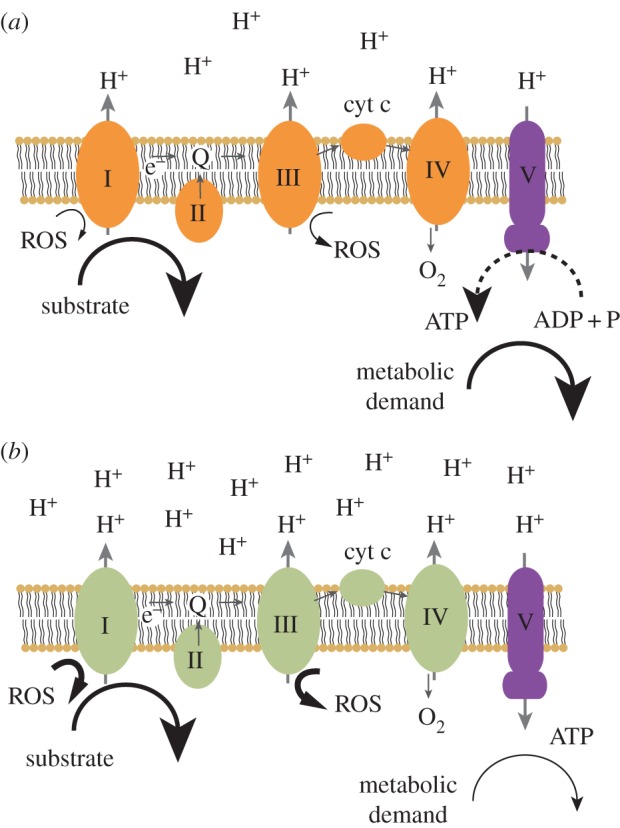Figure 2.

Schemata of the mitochondrial electron transport chain in different redox states. Substrate is oxidized and electrons follow a path (small arrows) through the electron carriers of complexes I–IV to molecular oxygen. Protons are extruded (large arrows) and return to the mitochondrial matrix via ATP synthase (V). In state 3 (a), substrate supply is adequate, and metabolic demand is high. The redox state of the electron carriers, the proton gradient, ROS and ADP levels are all intermediate. Phosphorylation rates are maximal. In state 4 (b), substrate supply is adequate, but metabolic demand is weak. ADP relative to ATP is minimal, the proton gradient is maximal, electron carriers are highly reduced, and ROS formation is maximal. (Online version in colour.)
